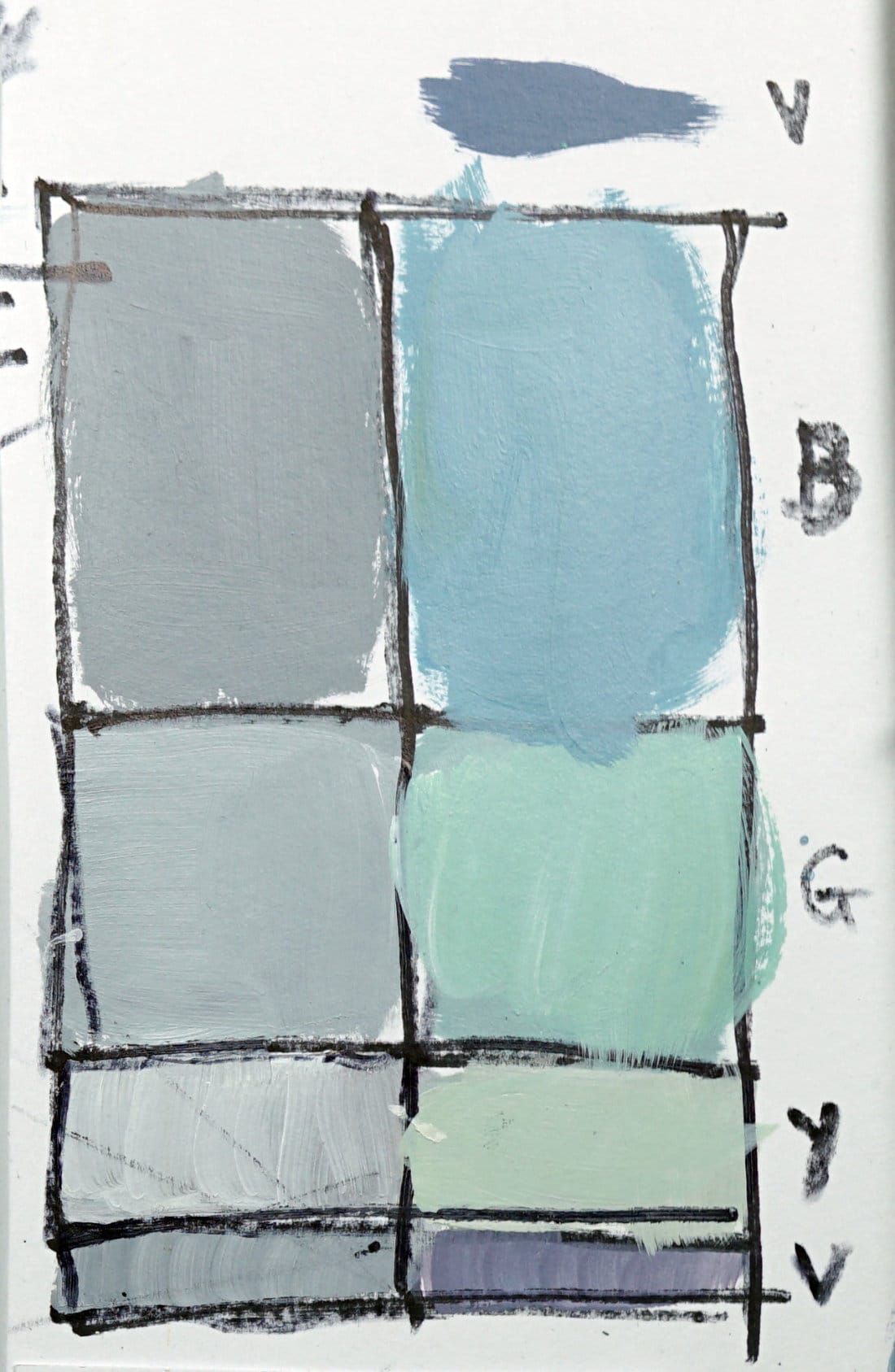How to Paint Clouds and Sky with Acrylics – The General Model
Learn how to paint clouds and sky using the general model. This lesson focuses on value relationships, color mixing, and atmospheric design.

Painting skies and clouds starts with understanding the general model — how value, color, and atmosphere work together. This simple framework helps you design skies that feel believable without overcomplicating them.
This lesson is part of the Acrylic Landscape Painting Fundamentals Course
Understanding the Sky’s Value Structure
Before diving into cloud shapes or color, it’s important to see the sky as a gradual value shift.
The lightest values appear near the horizon, and as you move upward, the sky deepens toward cooler, darker tones.
Think of the sky as a massive gradient. If that transition feels natural, your entire landscape instantly gains depth.

Mixing Color for the Sky
The goal isn’t to match a photo-perfect blue — it’s to create harmony.
I typically start with ultramarine blue, titanium white, and a touch of yellow ochre to warm the horizon.
If the sky looks too “clean,” a hint of alizarin crimson adds atmosphere and breaks up that sterile digital look.
These subtle shifts make a huge difference. Your blues will feel like air, not plastic.
Building Gradations with Acrylics
Acrylics dry fast, which makes blending tricky — but not impossible.
Here’s what works for me:
- Start with a slightly damp surface.
- Work from light to dark, bottom to top.
- Use horizontal strokes for smoother transitions.
Keep your brush moving. Don’t worry about streaks — a few soft edges actually make the sky feel more natural.
Why This Step Matters
This general model sets the stage for everything that follows — gradations, cloud types, and atmospheric effects.
Without a solid base, even the best clouds will look pasted on.
By mastering this foundational structure, you’ll be ready for the next lessons where we’ll layer in perspective, hue shifts, and believable cloud forms.
Materials Used
- Acrylics on mixed media paper
- Ultramarine Blue, Yellow Ochre, Titanium White, Alizarin Crimson
- 1” Flat brush for blending, smaller round for touch-ups
Complete acrylic supplies toolbox below.
Course Navigation
Next Lesson: How to Paint Clouds and Sky – Linear Perspective & Cloud Types
Previous Lesson: How to Paint Trees & Sky Holes Step by Step Demo
Course Hub: Acrylic Landscape Painting Fundamentals
Learn & Improve Your Acrylic Skills
- Acrylic Hub– Your go-to guide for tutorials, tips, and resources.
- Ultimate Beginner Acrylic Course - Start painting with confidence.
- Subscribe for More Great Content - Get tutorials, tips, and updates straight to your inbox.
- Follow Me on Pinterest - Daily inspiration, tips, and fresh ideas.
Recommended Acrylic Painting Materials
-
Princeton Catalyst Brushes – Flats (#6, #12), Rounds (#4, #8), Fan (#4), Liner Brush
Durable synthetic bristles for versatile acrylic techniques -
Liquitex Heavy Body Acrylic Paint – Essential Colors
Cadmium Yellow, Yellow Ochre, Alizarin Crimson, Cadmium Red Light, Ultramarine Blue, Cobalt Blue, Burnt Sienna, Titanium White -
Winsor & Newton Cotton Canvas
Reliable stretched canvas for studio and plein air work -
Strathmore 400 Series Mixed Media Paper
Heavyweight, acid-free paper for acrylic and mixed media -
Fabriano Artistico 140lb Cold Press Paper
Excellent for acrylic, mixed media, and textured effects -
Blick Multi-Colored Painting Knife Set
Variety of shapes for texture, scraping, and bold strokes - Miscellaneous: Two pint-sized water containers, paper towels (from Home Depot or Walmart)
- Note: I use canvas or sturdy cardboard as my palette — no store-bought palettes needed.




